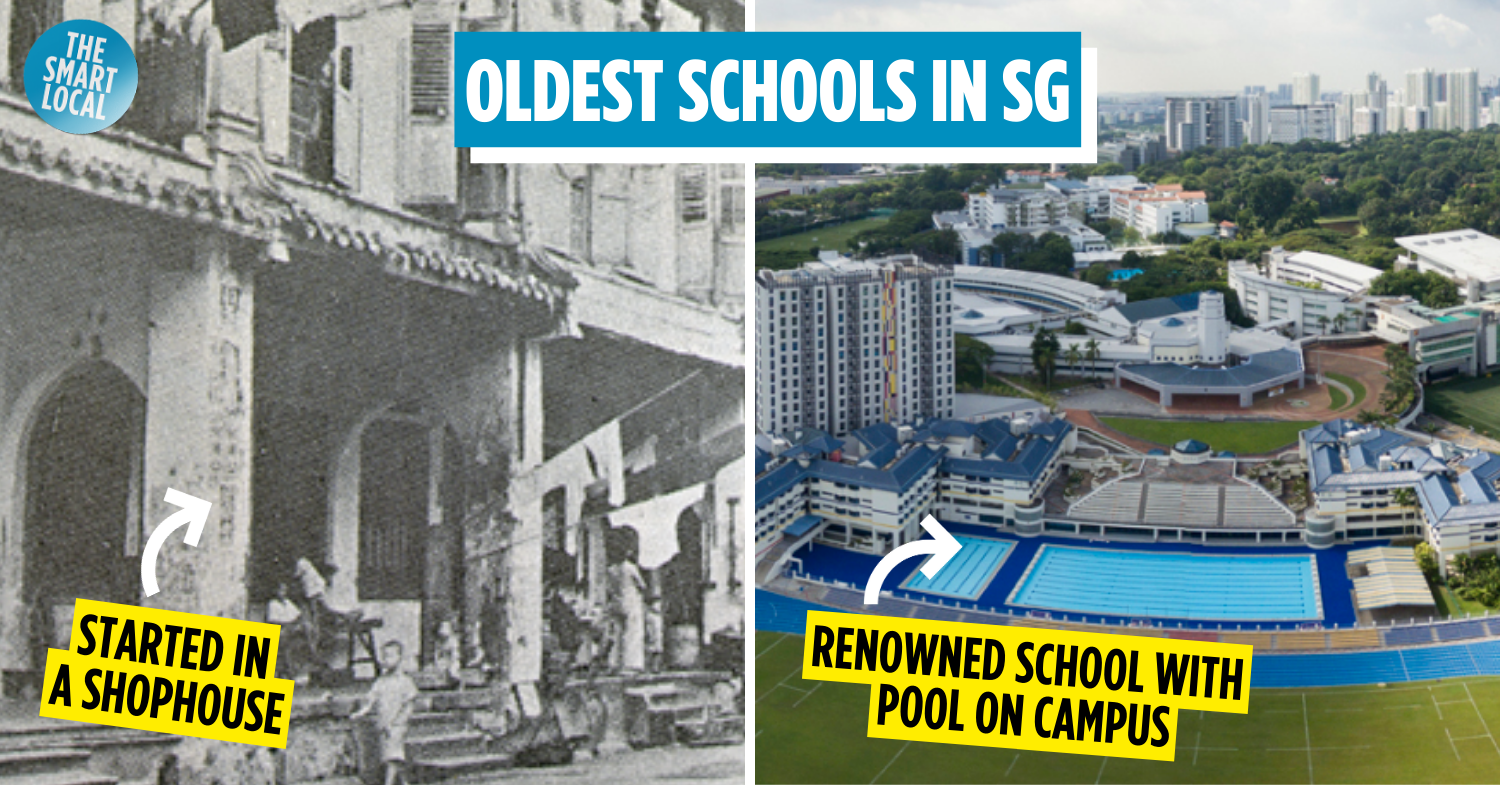Evolution of the oldest schools in Singapore
Waking up late and rushing to school before the national anthem plays is pretty much a core memory for anyone who went to school in Singapore. Reminiscing about school days is nostalgic for sure, but you’ve probably never pondered how rich the history of your school is.
From having shophouse extensions as classrooms to convents turned schools, this is the evolution of the oldest schools in Singapore. See how it compares with your alma mater.
Table of Contents
1. Hwa Chong Institution (1919)
Then – Set up to provide Chinese cultural classes
Before Hwa Chong Institution (HCI) … well, became an institution, it was actually 2 separate schools – Chinese High School and Hwa Chong Junior College. The former was founded by prominent Chinese businessman Tah Kah Kee, and formally established in 1919 to offer Chinese Cultural classes.
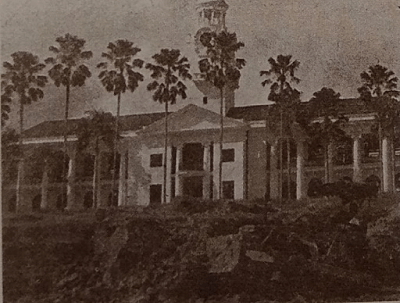
Image credit: Hwa Chong Institution
Fast forward to 2005, the school merged with Hwa Chong Junior College, forming the prestigious school we know today.
Now – Has the largest school campus in Singapore
Today, the school boasts a 72 acre-large campus and a 31m-tall clock statue. There’s even a statue to commemorate Tah Kah Kee, making it the only school in the country with a national monument onsite.
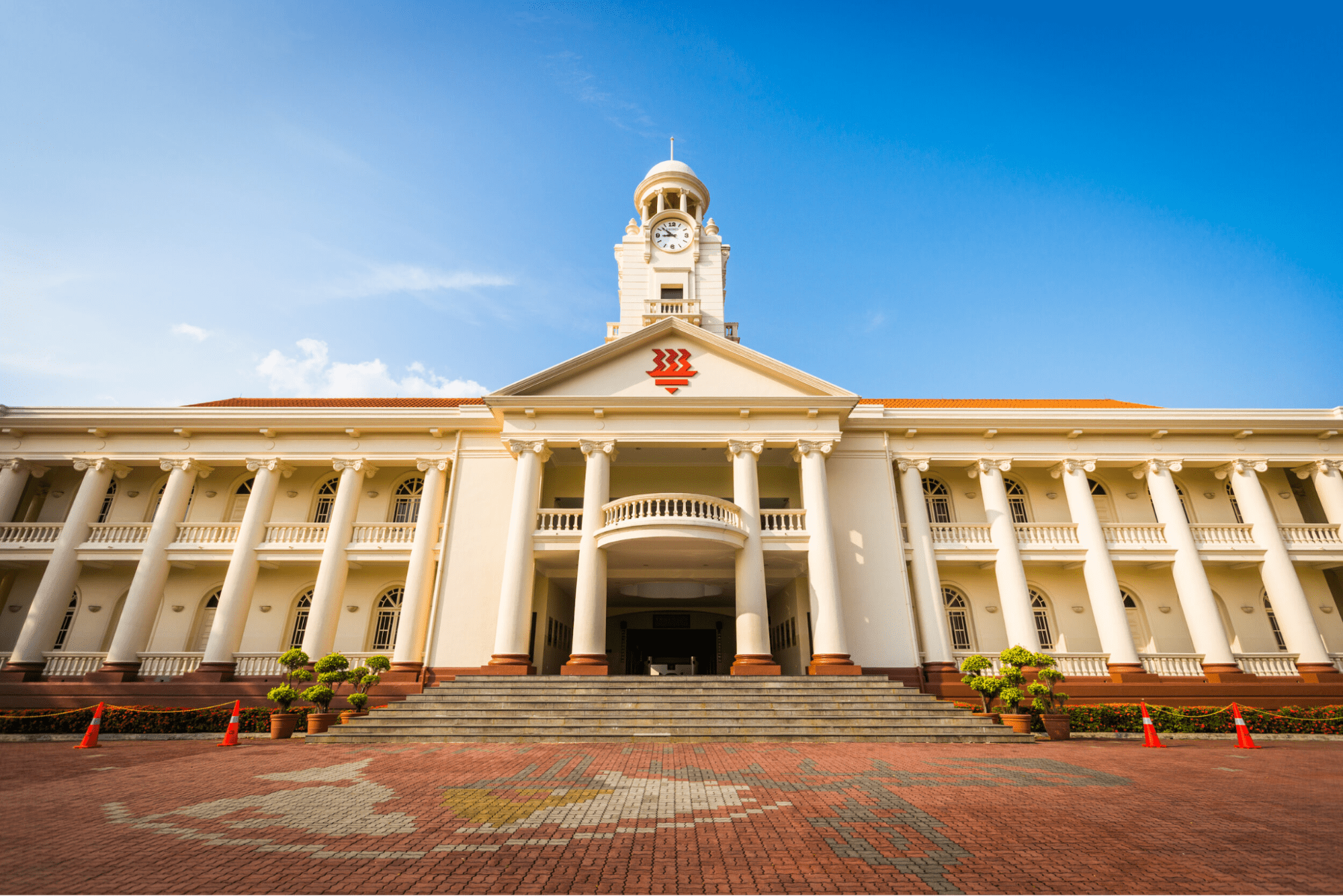 Image credit: Hwa Chong Institution Admissions
Image credit: Hwa Chong Institution Admissions
The school is affiliated with Nanyang Girls’ High School (NGHS) too, so NGHS students who take the Integrated Programme (IP) route will finish their last 2 years here. A little cross-campus exchange, if you will.
2. Nanyang Girls’ High School (1917)
Then – First school to offer art electives
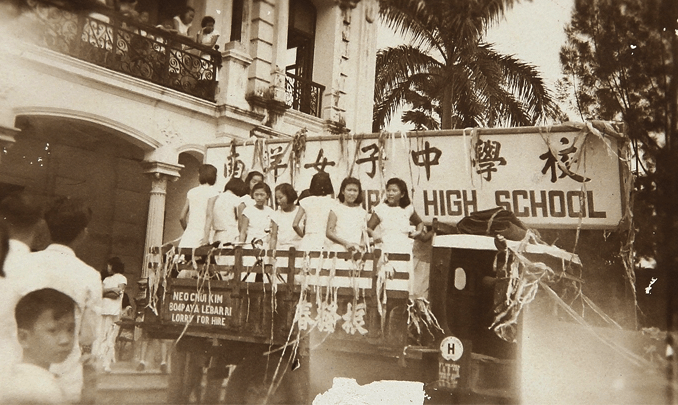
Image credit: Nanyang Girls’ High School
If we’re talking about humble beginnings, Nanyang Girls’ High School actually started in a shophouse unit over at Dhoby Ghaut. It was founded in 1917 with a mission to give quality education to Chinese girls. Beyond regular language classes, the school was among the first few in Singapore to implement art electives, in a bid to expand students’ artistic abilities.
Now – Has joint IP programme with HCI
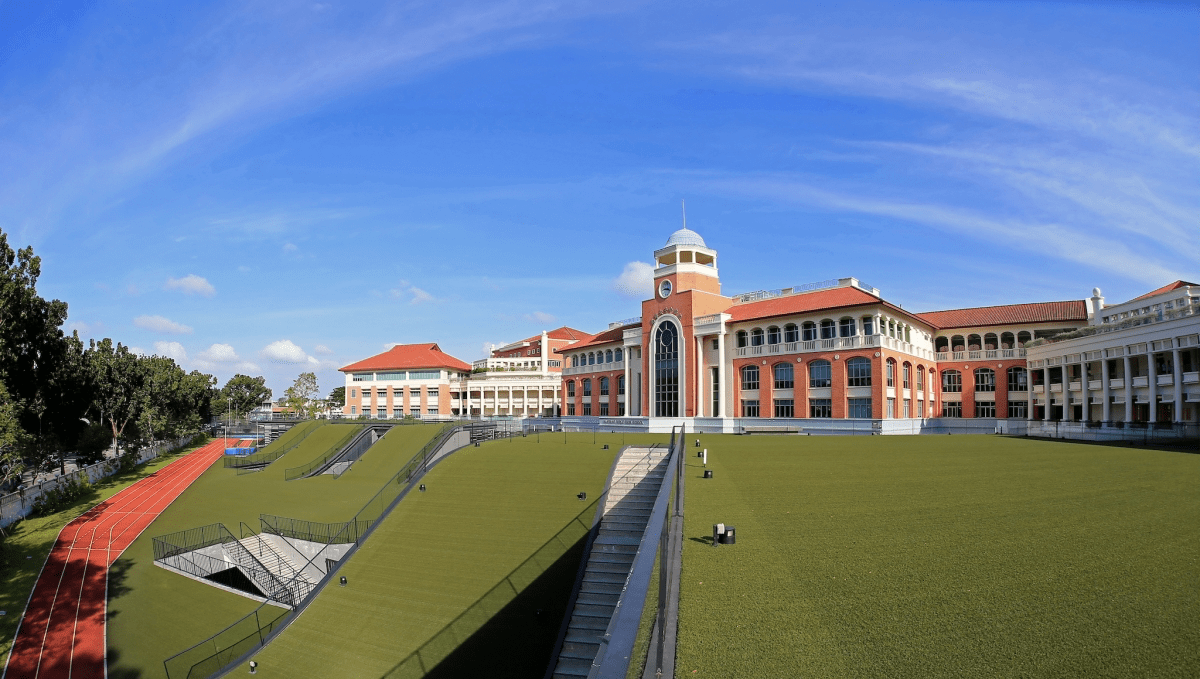 Image credit: Nanyang Girls’ High School
Image credit: Nanyang Girls’ High School
The Nanyang Girls’ that we know today sits in Bukit Timah, with 9 different blocks across the campus for classes of all subjects. They study hard, but they sure know how to play hard too. Rousing dinners, performances, and sports games are held occasionally to commemorate special events.
For those who don’t know, the school has a joint IP programme with Hwa Chong Institution, so students complete their first 4 years here first before studying for their IB diploma at HCI.
3. Methodist Girls’ School (1887)
Then – Started with only 9 Tamil students
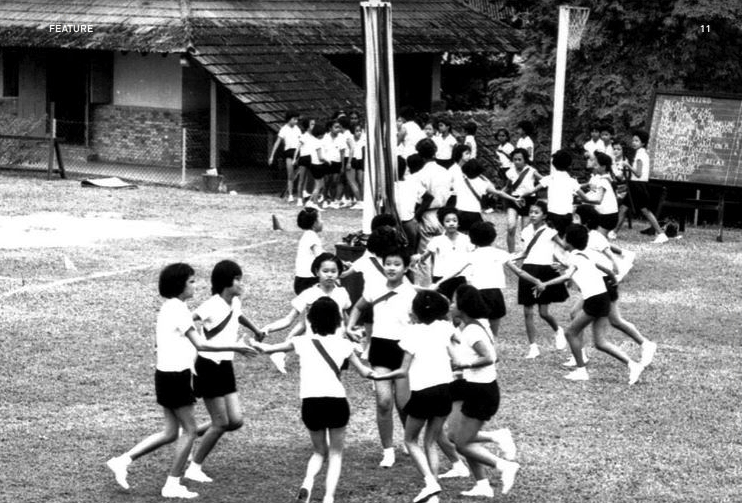
Image credit: Biblio Asia
Another girls’ school on the block is Methodist Girls’ School, which started back in 1887. An Australian missionary, Sophia Blackmore, was said to have founded the school and started classes with just 9 Tamil girls in the pioneer batch. Over a few years, this number increased to 150 and the school eventually grew big enough to introduce the IP programme as well.
Now – Offers DSA to IP programmes
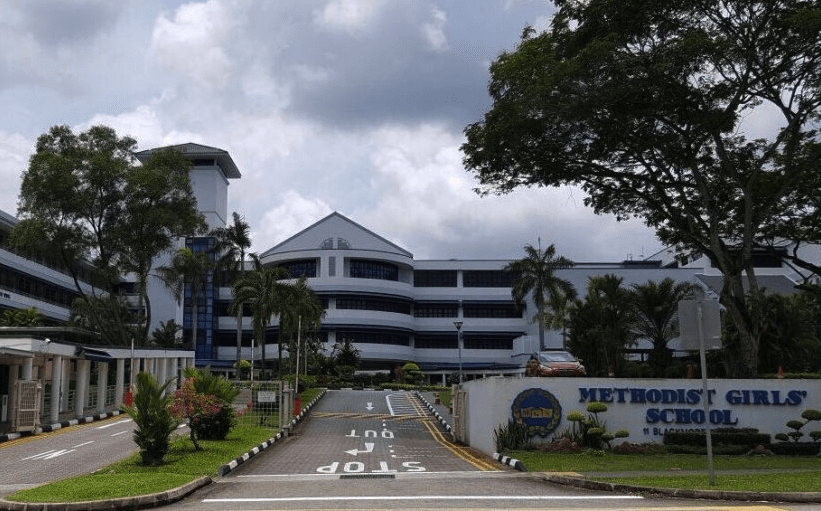
Image credit: Singapore Nurses Association
While students usually have to score well to be part of the IP programme, Methodist Girls’ School offers a separate route. Students looking to join their IP batch can do so via the Direct School Admission (DSA) system, through not only sports but academic modules like English and Music too.
And since it’s a Methodist school, you can expect chapel services that take place during their annual Discover Jesus Week, or during their regular church club meetings.
4. Anglo Chinese School (1886)
Then – Was a shophouse extension of Methodist Church
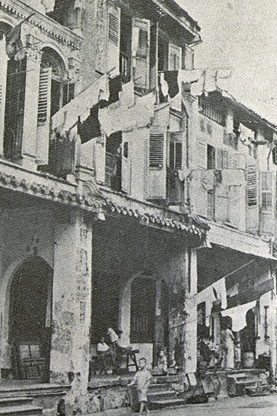
Image credit: Roots
You probably wouldn’t believe that a school as popular today as Anglo Chinese School (ACS) started in a small and cramped shophouse extension, attached to Methodist Church.
The founder, Bishop William, envisioned the school as a centre of education for kids in Singapore who couldn’t otherwise go to school during the Japanese occupation. With only 13 students when it first started, the school taught Chinese in the morning and held English classes at night.
Now – Known for its sports facilities & stellar reputation
The school has come a long way, from being just a bonus part of Methodist Church to having expanded to 7 separate schools under the ACS umbrella. There’s even an ACS international school branch located in Jakarta.
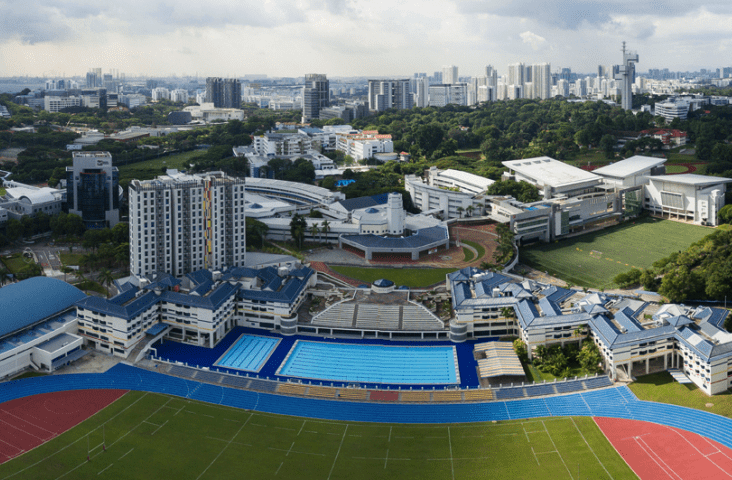
The school even has its own medical centre to study and treat sports injuries.
Image credit: Wikimedia Commons
But that’s not all. If you play sports competitively, going to ACS would be a good choice. The school offers fully equipped sports facilities like 2 basketball courts, a swimming pool, and 2 tennis courts, among others. Oh, and have we mentioned that Olympic gold-medallist Joseph Schooling is an alumni?
5. Gan Eng Seng School (1885)
Then – Offered free education to the poor
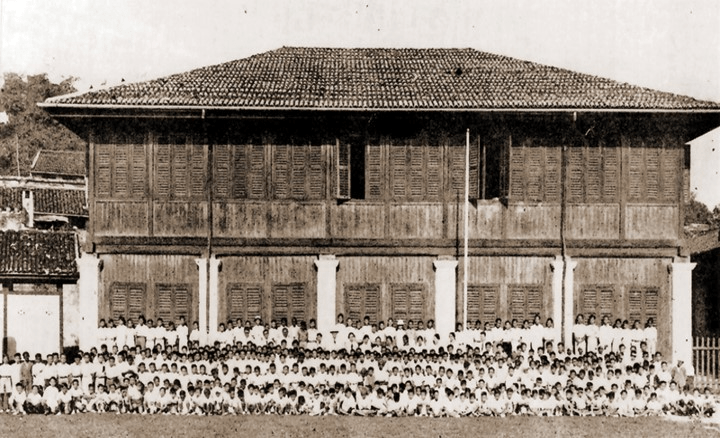
Image credit: Gan Eng Seng Secondary School
Gan Eng Seng School provided free education to those who couldn’t afford the fees, which was much-needed during an era where poverty in Singapore was rampant.
The school was established in 1885, thanks to funding from Chinese businessman, Gan Eng Seng. They operated as an all-boys school up till 1987, and was the only one to teach bilingual classes during the time.
Now – Current campus built by 11 architects
The school’s current campus was built by a total of 11 architects. What makes it even more special is that the building design was inspired by the OG school crest, made up of a red dragon and a white ship.
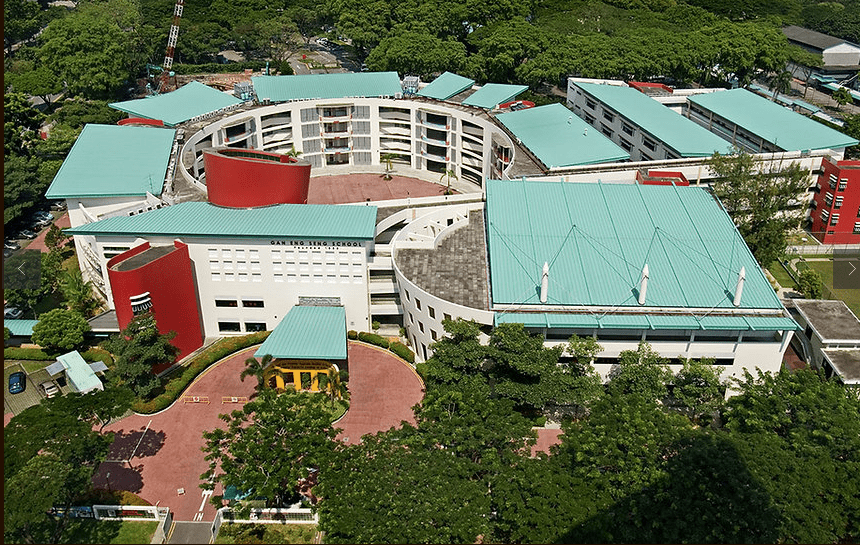
Image credit: Guan Ho Construction Co.
Besides the typical Maths and Science subjects, the school offers a nifty additional curriculum for the benefit of all students – The Gessian Series. It comprises sharing sessions by past alumni on useful topics ranging from financial management to career guidance. Think of it as an intro to adulting – we’re kind of jealous we didn’t get this in our school!
6. CHIJ (1854)
Then – Convent-turned-school
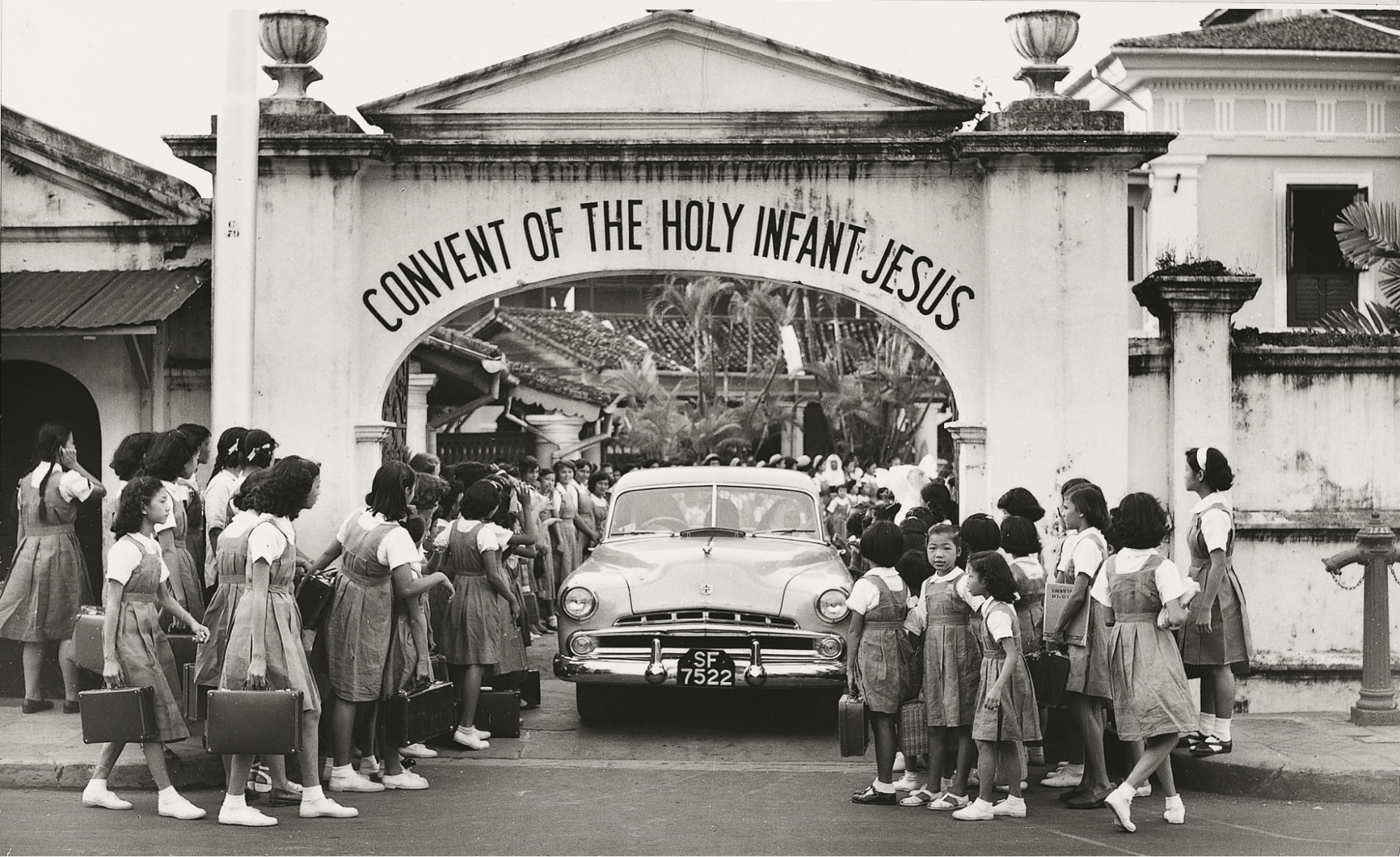 Image credit: MOE Heritage Centre
Image credit: MOE Heritage Centre
Convent of the Holy Infant Jesus, or CHIJ, is part of the network of oldest Catholic schools in Singapore. Going all the way back to 1854, they began as a convent and home for abandoned babies. Formal classes only began in 1905, when more and more people expressed interest in the school’s needlework classes, and started requesting tutelage in other areas as well.
At the time, CHIJ sat right by streets like Victoria Road and Bras Basah Road, which made its location more central. This encouraged more students to join the school since the area was easily accessible.
Now – Expanded to 11 other schools
The church portion of the school was demolished to make way for new offices, and other buildings like the CHIJMES complex. The latter has since become a popular hangout spot for both locals and tourists, with tons of places to dine, shop, and learn about Singapore’s history.
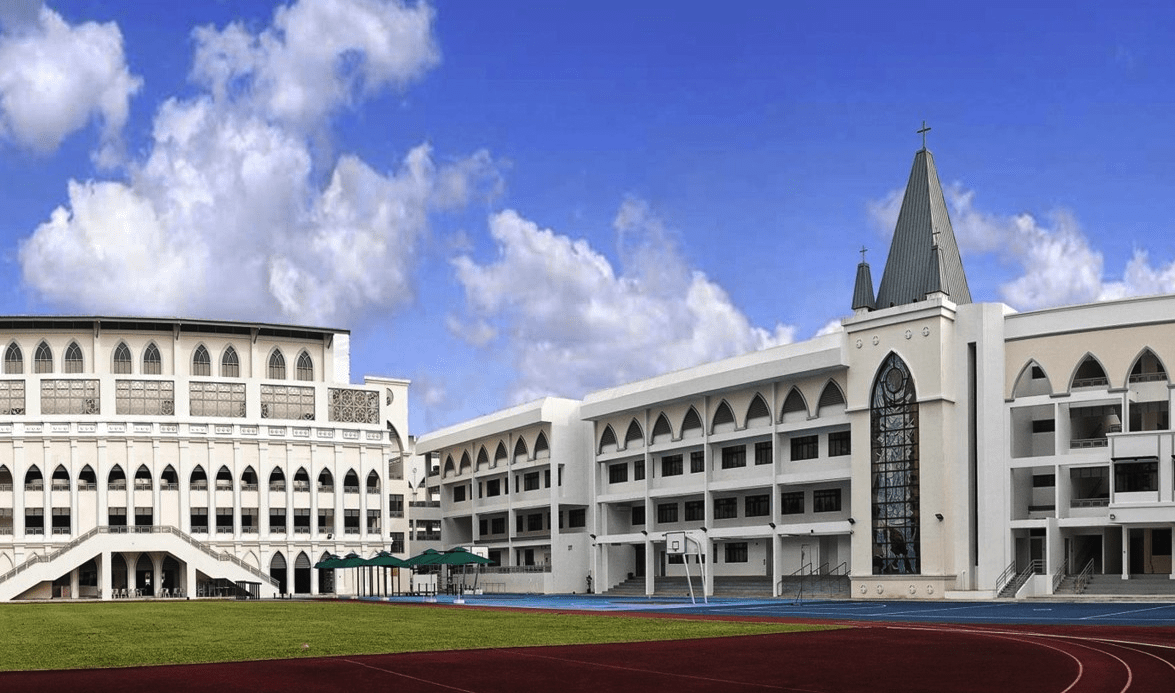 Image credit: MOE Heritage Centre
Image credit: MOE Heritage Centre
The school has since expanded its branches, now with 11 CHIJ schools across primary and secondary levels. They’re also affiliated with Catholic Junior College, so if you’re planning to take the A-level route eventually, you know where to go to get a headstart.
7. St. Joseph’s Institution (1852)
Then – Used as a hospital during WWII
Previously named St. John’s School, St. Joseph’s Institution was run by Catholic priest and missionary, Jean-Marie Beurel, back in 1852. He aimed to build a school that could promote education and Catholic missions at the same time.
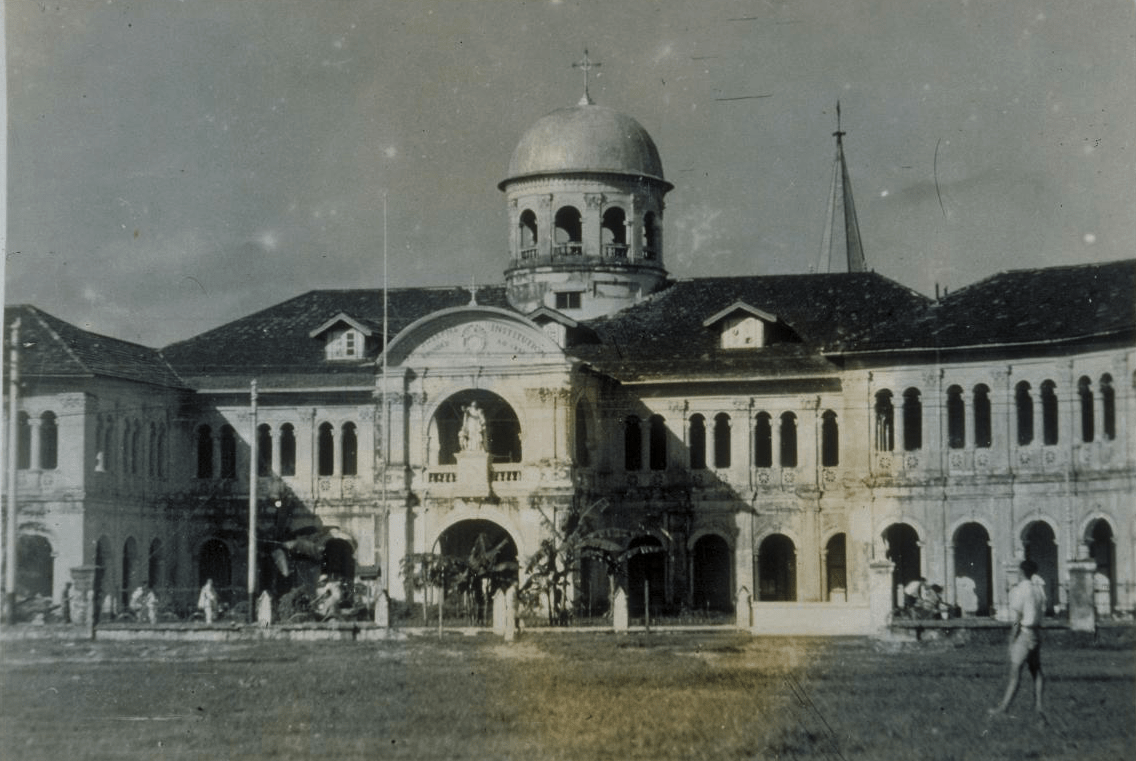 Image credit: Roots
Image credit: Roots
When WWII hit though, the school was converted into a hospital and was the base for a Civil Defence Force Unit later on. Since it had a tall, white bell tower, soldiers could spot the place from afar whenever they required medical aid, making this an easily identifiable site of refuge.
Now – Newly renovated campus on Malcolm Road
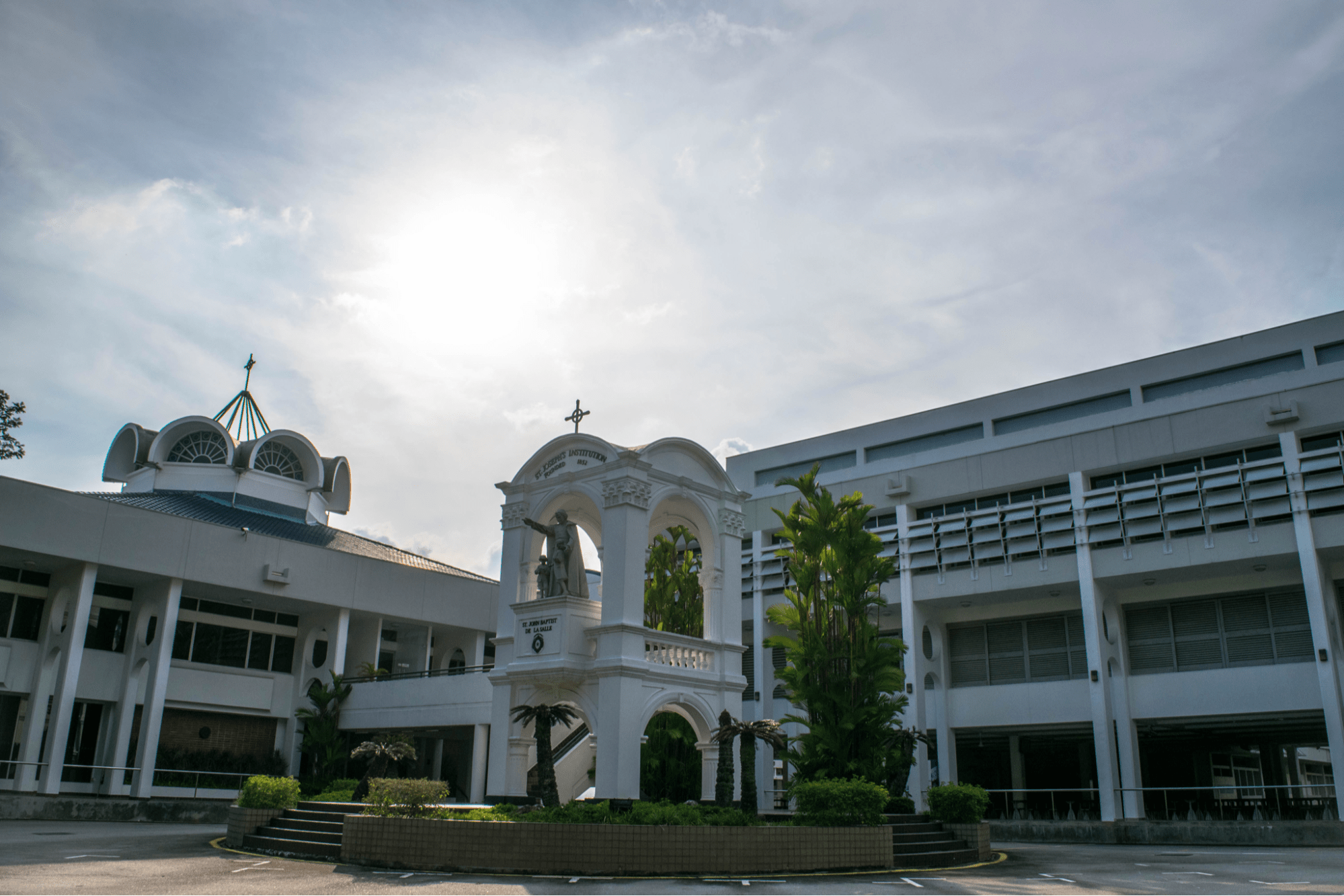 Image credit: St. Joseph’ s Institution
Image credit: St. Joseph’ s Institution
SJI’s old campus was converted to the site for Singapore Art Museum, while the school currently operates on Malcolm Road. Students now get to enjoy a bigger campus equipped with newer classrooms and facilities.
Parents looking to enrol their child in the IB diploma, consider St. Joseph’s – the school offers IP programme classes which lead to the diploma.
8. St. Margaret’s School (1842)
Then – First Anglican girl’s school in SEA
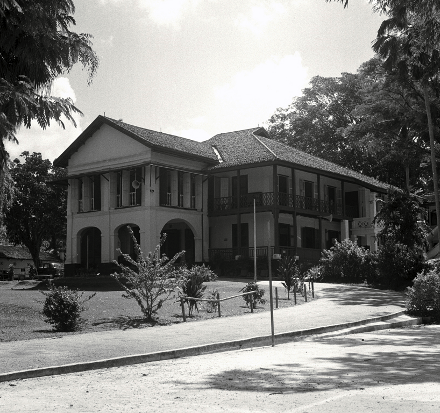
Image credit: Roots
St. Margaret’s School was established in 1842 by British missionary, Maria Dyer, who hoped to give girls a home and proper education during a time where many young girls were auctioned off as slaves.
Located at North Bridge Road, the school was initially known as Chinese Girls School, but changed to its current name in honour of Queen Margaret of Scotland.
Now – Government-aided school under the Anglican Diocese
The St. Margaret we know today, which refers to the Secondary School, has branched out to St. Margaret’s Primary School, with affiliations to St. Andrew’s Junior College as well. They’ve also been classified as a government-aided school that currently operates under the Anglican Diocese of Singapore church.
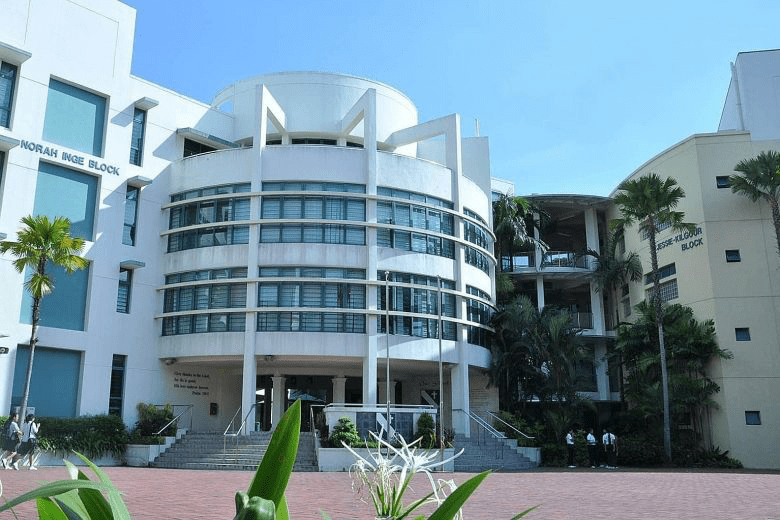
Image credit: Roots
Students here get quite the interesting curriculum, with project-based subjects that encourage critical thinking, and other focused topics like Environmental & Sciences and a drama programme.
9. Raffles Institution (1823)
Then – Known as Singapore Institution
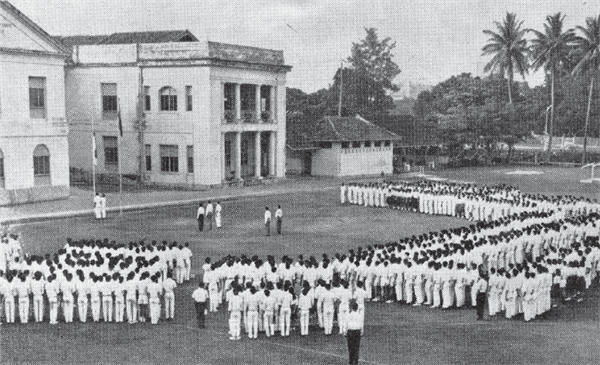
Image credit: Raffles Institution
Ah, Raffles Institution.The school was initially named Singapore Institution Free School in 1823 when it was founded by Sir Stamford Raffles. Construction of the school campus was delayed due to the lack of government funds, so the very first batch of students only enrolled in 1834.
The school was initially built as an educational site for the children of prominent leaders, eventually becoming the first location of the National Museum of Singapore plus National Library.
Now – Prestigious school with alumni like Mr Lee Kuan Yew
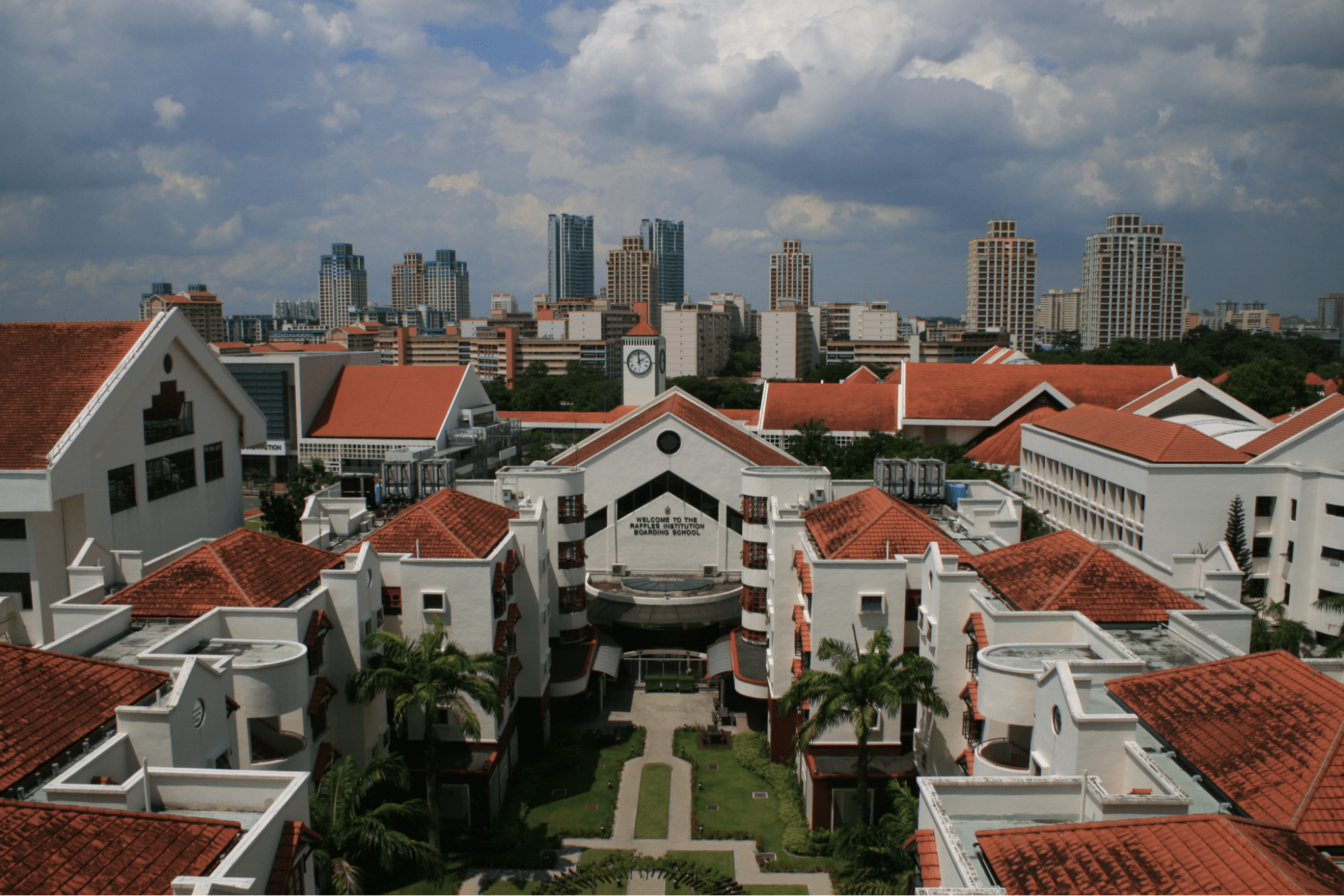 Image credit: Raffles Institution
Image credit: Raffles Institution
The school has some famous alumni, most notably Mr Lee Kuan Yew himself, as well as Singapore’s first president Mr Yusof Ishak. It is one of the most prestigious secondary and tertiary institutions in the country, with cut-off points that go as low as 4 points – requiring you to score an A in every subject to secure a spot.
Oldest schools in Singapore, then vs now
While it may be a regular occurrence for us to walk past some of these old buildings, we don’t really stop in our tracks to think about and appreciate the rich history behind their hallowed halls.
Whether you’re a current student, member of the alumni, or prospective enrollee at one of these schools, one thing’s for sure – their stories will continue to live on for future generations of students. And for the rest of us, it’s just pretty darn cool to learn about how vastly things have changed in Singapore throughout the centuries, for something as staple as education.
For more heritage and culture, check out:
- Fort Siloso – Former military site
- Seletar Airport – Colonial era airport
- Markets & hawker centres in the past
Cover image adapted from: Roots & Wikimedia Commons
Originally published on 15th September 2023.
